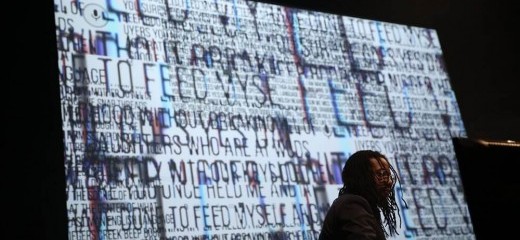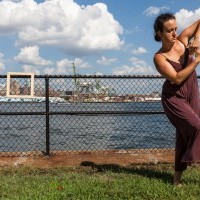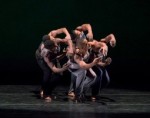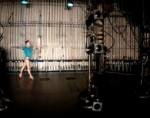
Reservoirs of Presence
by Christina Catanese
There are vast reservoirs beneath us, but it’s difficult to observe them directly.
Aquifer of the Ducts by James Allister Sprang is a meditative sound and video work and a second installment in a series; one previous work, Aquifer of the Spirit, premiered earlier this year. Sprang invites viewers to breathe and listen deeply, and be present together as sonic landscapes unfold on their home screens. A simple but radical act, he asserts that dropping into this mode “allows us to slow down, turn inward, and heal.” Being a hydrologist in a past life, I find that aquifers provide a useful metaphor for the mindful process of turning inside and tuning into what is always there but is not always easy to access.
The work is offered to a live Zoom audience. To begin, Sprang asks viewers to make themselves comfortable for viewing, saying “I personally am sitting in my favorite chair, under my favorite lamp, surrounded by my favorite plants.” Tired of sitting at my desk, I take the invitation. I unroll my squishy Pilates mat and make an upright pillow nest on the floor, my own favorite plants nearby.
Aquifer of the Ducts unfolds with abstract shapes and colors washing across the screen. In several chapters of the work, the textures shift along with the soundscape. Sound descending in pitch invites us to descend along with it; pinks and blues give way to a green, distorted waterscape, later punctuated by reds and whites. A figure facedown on the ground (former Bill T. Jones/Arnie Zane Dance Company dancer Shayla-Vie Jenkins) reaches her arms behind toward her feet. In the midst of the unfolding colorshapes, Jenkins moves in an area with no spatial points of reference; the lack of visible ground and walls is pleasantly disorienting and gives her movements a boundless quality, integrating her with the abstract video elements.
I am struck by small details of Jenkins’s movements, single upturned palm and a slow roll over with an arm passing across her face. The simplicity does not belie Jenkins’s physicality, however, seen in astonishingly lengthy hinges to the floor or a weightlessly suspended spin on her stomach. I’m captivated by the isolated movements of her shoulder blades as she steps forward bent at the waist opening her arms wide. I find myself wondering how the movements themselves were generated, and what direction Sprang may have given to Jenkins, but I let the question flow along with the sounds.
A middle chapter features horizons coming and going, and a long time without a visible human figure. I’ve dropped into the moment and am fully immersed in the world built by Sprang and collaborators, which allows my subterranean imagination to wander. I find myself dropping into a new understanding of the reservoirs of water beneath our feet (more poetic and subtle than what was afforded by my technical groundwater coursework), alongside the reservoirs of presence available within ourselves. When we bring awareness to the present moment, it’s fascinating what arises.
My reverie shifts when Jenkins returns; watching her seek balance in unstable shapes focuses my thought flow. She becomes swept up in faster waves of color. Increasingly obscured, her movements become harder to make out through the colors. The pace of sound and images continues to increase until both suddenly vanish. To the sound of breathing, an image of Jenkins standing emerges, one hand on her heart and one on her stomach, in a completely blank, black space.
At the conclusion of the performance, Sprang sends us away saying, “If you are in Philadelphia, I hope you can step out into the rain.” Where I live in Michigan, it had rained the day before. With Aquifer still sifting through my newly porous being, I think of water and consciousness flowing through the world.
Aquifer of the Ducts, James Allister Sprang, FringeArts online, September 29-October 1.
By Christina Catanese
October 1, 2020








